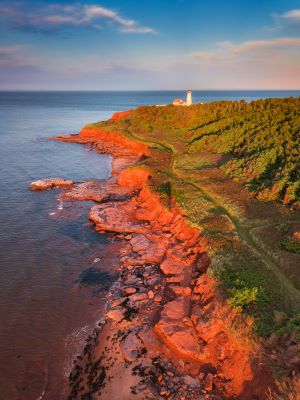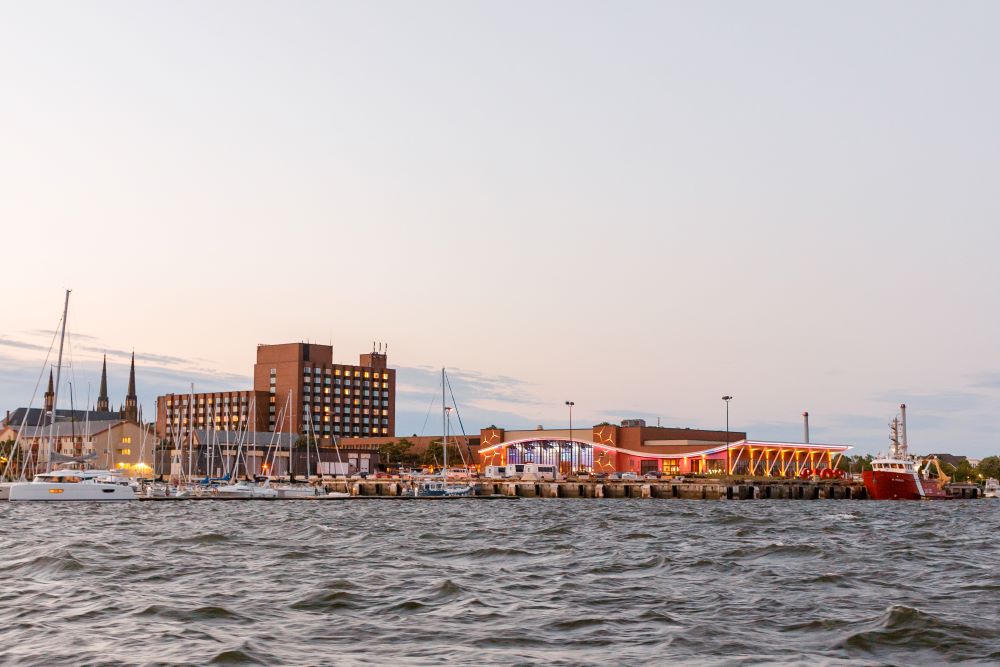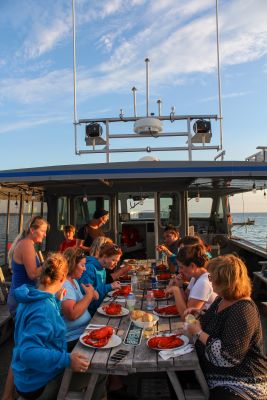In the Atlantic Ocean along Canada’s east coast and tucked in between New Brunswick and Nova Scotia sits Canada’s smallest province, Prince Edward Island, affectionately referred to as PEI by its 180,000 locals.
Surrounded by the Gulf of St. Lawrence to the north and the Northumberland Strait to the south, PEI spans approximately 174 miles between its easternmost and westernmost ends and, if you travel from tip to tip, only takes between three to four hours to drive across.

“You’re only 10 minutes from the ocean no matter where you are,” said Susan Freeman, executive director of Meetings & Conventions Prince Edward Island (M&CPEI). “It’s truly magical.”
Despite its intimate-island size, PEI packs a mighty punch—especially for meetings and events groups looking for a unique and authentic coastal community that will welcome them with open arms.
“I think we’re really a true gem of Canada, and probably a really unknown gem of Canada,” Freeman said. “We’re really well known for hospitality, for being warm and welcoming, and people feel very safe on Prince Edward Island.”
The island is easily walkable, too, especially within its two capital cities, Charlottetown and Summerside, and because of its size offers an authentic local experience unlike anywhere else. In fact, M&CPEI’s “Big Fish” welcome program turns the small size of PEI into its best-selling feature.
The “Big Fish” welcome program includes the M&CPEI team personally greeting groups arriving at Charlottetown Airport, providing samples of local manufacturer Honibe’s pure-honey products and hanging up personalized welcome banners all over downtown Charlottetown to make it feel like a group “owns the city” during their time on PEI—“like a Big Fish in a Small Pond.”
“We’re sort of untapped, I think, and a really special place,” Freeman said. “And our team here at Meetings & Conventions PEI really takes pride in connecting meeting planners with all of those really special people that they need to connect with—and we hope to do that more.”
[Related: Historic Eastern Canada Event Venues That Feel Fit for Royalty]

Group Gatherings on Prince Edward Island
Prince Edward Island is an ideal destination for medium-sized groups of anywhere between 400-800 people.
Charlottetown’s citywide conferences typically host 400-plus attendees at the Prince Edward Island Convention Centre, which is connected to the 211-room Delta Hotels Prince Edward by Marriott. Together, the two offer more than 36,000 square feet of meeting space, including a 23,000-square-foot ballroom that can be divided into six separate spaces and an outdoor patio with space for up to 600.

The island’s boutique hotels far outnumber those with big-brand names, though, and many are family-run, -owned and -operated across the island.
“For smaller groups like incentives and corporate, we have some really great resort properties on the eastern and the western ends of PEI, and they’re connected to golf courses,” Freeman said. “We actually have the most golf courses per capita in Canada.”
One exciting new development opening this summer that incentive planners will want to check out is Blackbush Resort, PEI’s newest beach resort property. The Hotel at Blackbush will feature 30 boutique rooms overlooking the PEI National Park, ocean and parabolic dunes of Blackbush Island.
“All of the rooms are going to have ocean views, and the owner is very committed to making sure it’s a luxury property,” Freeman said. “There will be the opportunity to buy the entire resort property as a group for something very high-end.”
[Related: Sports, Visual Technology and More Elevate Toronto Meetings Scene]
Authenticity and Sustainability
Prince Edward Island is known internationally as “Canada’s Food Island” for its culinary excellence and fresh local cuisine. The island’s rich iron-red farmland makes PEI a big potato grower surrounded by a huge aquaculture industry that ships mussels and oysters worldwide.

“The other side of that is, with a lot of those providers that are in the outskirts outside of Charlottetown, groups can have an authentic experience like getting on a lobster fisherman’s boat,” Freeman said, referring to J.J. Chaisson, aka The Fiddling Fisherman.
In the lobster-fishing offseason, Chaisson takes groups out on his boat and helps them haul a lobster trap up from the ocean floor. Then everyone chooses their own lobster and watches it cook in ocean water while being entertained by Chaisson, who also happens to be a fiddler who has traveled the world.
“We’re very driven by making sure that our experiences are also sustainable,” Freeman said. “One thing that meeting planners have always said they love when we’ve taken them out on that experience is that they get to throw the lobster shells over the side of the boat because they go back in the ocean and feed what’s at the bottom.”
Sustainability and authenticity reach deep into Prince Edward Island’s dining scene, too. For example, The Table Culinary Studio, an award-winning restaurant with a focus on “hyper-local experiential cuisine,” is dedicated to using and promoting the foods grown and harvested on PEI while honoring the culture and history of the land.
The single-seating dining experience accommodates only 32 guests per night from May through the end of October and offers a set seven-course menu of tasting dishes prepared by Executive Chef Hunter Guindon.
“It was a church at one point that’s been renovated into a restaurant, and the kitchen is right there in the middle of everything,” Freeman said. “[Chef Guindon] builds his menu backwards based on what local suppliers are bringing him that week. Typically, in a season, when The Table is open from May until the end of October, he’ll build about 150 menus—and he’s so competitive with himself that he doesn’t make a dish twice.”







